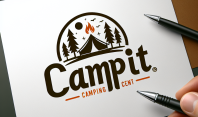When it comes to camping, choosing the right tent shape can make a big difference in your overall experience. There are several different tent shapes to choose from, each with its own set of pros and cons. In this article, we will explore the pros and cons of a few popular tent shapes for camping.
Dome Tents
Dome tents are one of the most popular tent shapes for camping. They are typically easy to set up, lightweight, and provide good headroom. Dome tents are also known for their stability in windy conditions, making them a great choice for camping in unpredictable weather. However, dome tents may not offer as much interior space as other tent shapes, and the sloping walls can limit headroom in some areas of the tent.
Cabin Tents
Cabin tents are a popular choice for family camping trips. They are known for their spacious interiors and straight walls, which maximize usable space inside the tent. Cabin tents often have multiple rooms and large windows, providing a more home-like experience while camping. However, cabin tents are typically heavier and bulkier than other tent shapes, making them less ideal for backpacking or hiking trips.
Tunnel Tents
Tunnel tents are another popular tent shape for camping. They are typically easy to set up and offer a good balance of interior space and stability. Tunnel tents are ideal for camping in windy conditions, as their low profile design helps them withstand strong winds. However, tunnel tents may not offer as much headroom as dome tents, and their elongated shape can make them less practical for setting up in tight or uneven camping spots.
Geodesic Tents
Geodesic tents are a more specialized tent shape that are known for their strength and stability. They are typically designed with multiple intersecting poles, creating a strong and rigid structure that can withstand harsh weather conditions. Geodesic tents are ideal for camping in windy or snowy conditions, as they can handle heavy snow loads and high winds. However, geodesic tents are typically heavier and more complex to set up than other tent shapes, making them less ideal for casual camping trips.
Cross-Over Tents
Cross-over tents are a versatile tent shape that combines elements of dome and tunnel tents. They typically offer a good balance of stability, headroom, and interior space. Cross-over tents are a great choice for campers who want the best of both worlds the stability of a dome tent and the spaciousness of a tunnel tent. However, cross-over tents may not excel in any one area, making them a compromise choice for some campers.
Conclusion
When it comes to choosing a tent shape for camping, there are several factors to consider. Dome tents are lightweight and easy to set up, but may not offer as much interior space. Cabin tents provide spacious interiors but are heavier and bulkier. Tunnel tents offer good stability but may lack headroom in some areas. Geodesic tents are strong and stable but more complex to set up. Cross-over tents offer a balance of stability and interior space but may not excel in any one area.
Ultimately, the best tent shape for your camping trip will depend on your specific needs and preferences. Consider factors such as weather conditions, camping location, group size, and transportation when choosing a tent shape. With the right tent shape, you can enjoy a comfortable and enjoyable camping experience in the great outdoors.


leave a comment